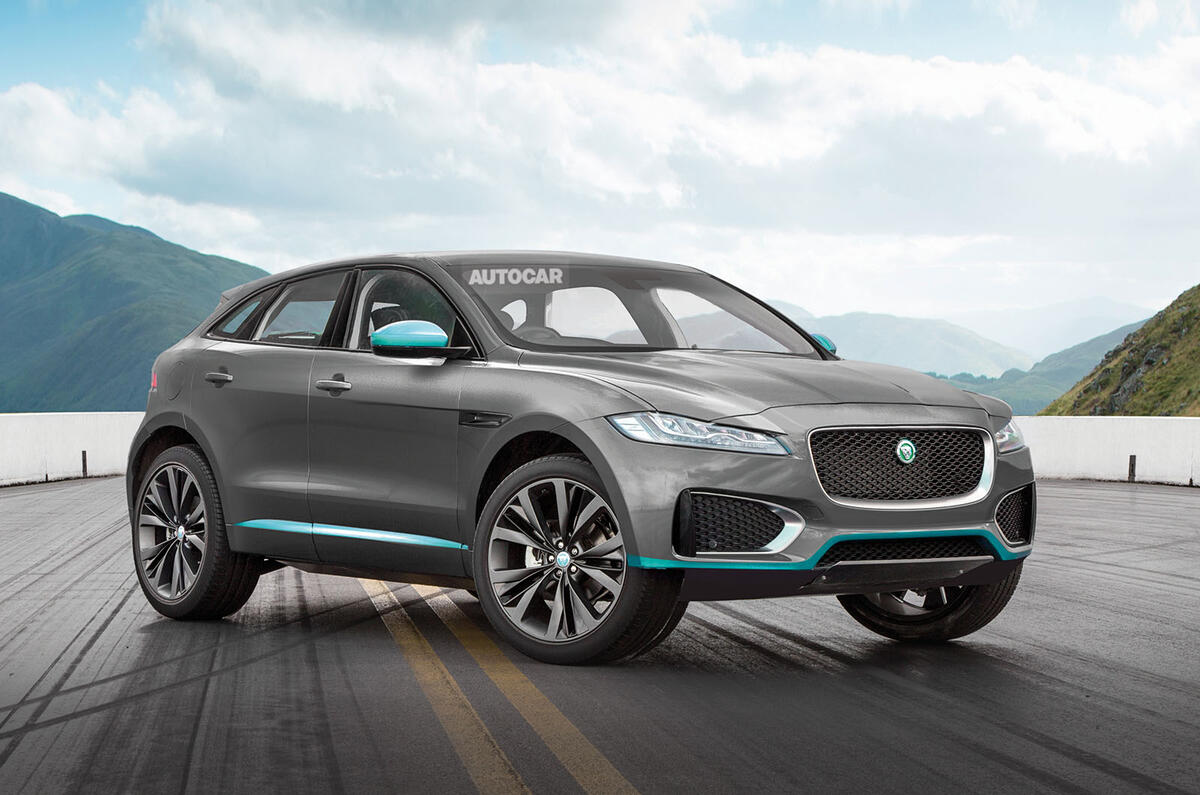Jaguar has been given the green light to launch a compact all-electric SUV by 2018, putting it ahead of its Range Rover sister brand in the race to get a battery-powered vehicle into showrooms.
The Jaguar I-Pace has been revealed, take a look here
The electric Jaguar is due to be revealed by the end of this year. There’s no word yet on what the vehicle will be called, but E-Pace, a name that Jaguar has trademarked, is a distinct possibility.
Autocar understands the electric SUV will be based on the Jaguar Land Rover EV platform unveiled a year ago at a low-carbon vehicle event in Bedfordshire. Although the project was called the Evoque_e, Autocar understands Jaguar is now leading the project, and the styling of the new EV has recently been signed off.
The E-Pace is believed to be slightly smaller than the Jaguar F-Pace, with a lower roofline and even more dramatic styling.
Jaguar Racing is launching a factory Formula E effort - read more here
It’s also thought that the emphasis with the E-Pace project will be on showing how electric drive can deliver vivid performance and handling, as well as exceptional refinement. The new Jaguar will be an example of how battery power can underpin a serious performance car.
Allowing Jaguar to launch JLR’s first EV will help the brand to shake off its remaining ‘old world’ image and will link into its upcoming Formula E race series entry.
The E-Pace is packaged to ensure that it’s classified as an SUV under US market legislation. This is important, because JLR needs to sell EVs in some numbers over the next decade in the important Californian market in addition to internal combustion models.
With the brand emphasising performance and handling prowess, the new electric Jaguar is set to get all-wheel drive. Although this new platform uses aluminium construction, it has little in common with the structures used to underpin JLR’s current generation of aluminium cars.
The front and rear crash structures, suspension mounting points and sills are all made of aluminium. However, much of the strength of the structure comes from the battery pack, which forms the backbone of the structure and takes up the whole floor area. Autocar understands this structure is easy to scale and a slightly wider and longer version of it will underpin the planned Range Rover EV.
We got a behind-the-scenes look at Jaguar's Formula E operations - get the full story here
In the prototype, JLR said the lithium ion battery pack was rated at 70kWh, but that’s likely to be slightly bigger in the production car for an maximum range of 280 to 300 miles in ideal conditions.
The motors in the JLR EV platform have been designed by the company itself. Dubbed Electric Axle Drive (EAD), they are designed to be cheaper to make and longer-lasting than existing ones. The JLR design doesn’t use rare earth magnets and has aluminium winding instead of the more common, and more expensive, copper.
A senior JLR engineering source said the material cost of the motors is around 60% lower than more conventional designs and should have a “30% longer life”.
The front motor develops 114bhp and drives the front wheels through a single-speed transmission. The rear motor is good for 195bhp and drives through a two-speed ZF gearbox, adapted from the unit used by the BMW i8, Autocar understands. Combined output is around 308bhp, but torque hasn’t yet been revealed.
The E-Pace has been spied testing, get your first glimpse at the car here
Twin motors should permit very dynamic tuning of this platform, offering torque vectoring for stability control and to help the car turn in to corners. It will also be possible to switch between front, rear and all-wheel drive almost instantaneously.
Autocar understands the future Range Rover EV will be bigger than the E-Pace. Land Rover design boss Gerry McGovern has already strongly hinted about a “longer and lower” future generation of new Range Rover models that could introduce a more modern idea of a luxury interior.
Like the E-Pace, any Range Rover EV would need to have a smaller frontal area as a fundamental part of an energy-saving design. In the same way that the Audi Q6 e-tron has a notably lower roofline than an Audi Q7, a Range Rover EV would need to be aerodynamically much more efficient than today’s models to maximise the battery range. Height-adjustable air suspension will probably be used to offer both decent off-road performance and a road-hugging stance for higher-speed travel.
The Range Rover EV is unlikely to arrive before 2019. This bigger EV platform could also be adapted for a future range-topping Jaguar EV road car to take on the Porsche Mission E and future Teslas.




Join the debate
Add your comment
they are all going about it
You really think Porsche's
No, it will be inferior
By the time the Mission E is launched (if ever) it will be facing performance variants of the Model 3 and, probably quite soon, an entirely new Model S.
JLR,BMW and Ford supposed to be setting up a joint venture